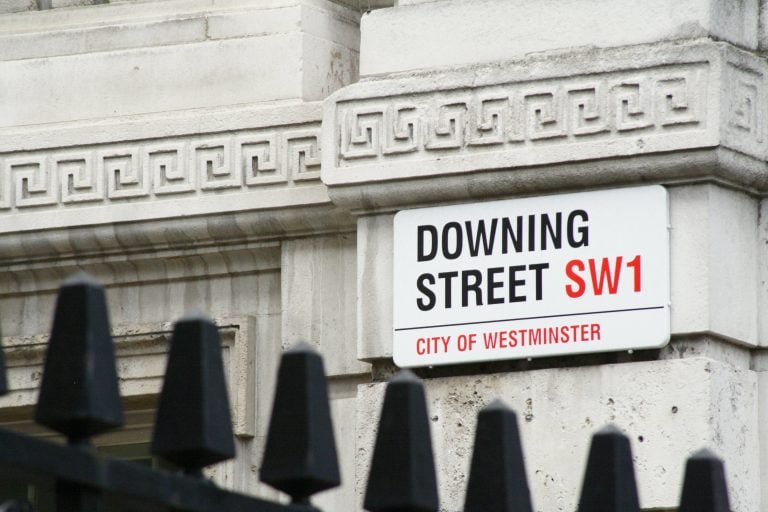BLOG
The return of shielding | Can clinically extremely vulnerable people go to work?
England has now emerged from lockdown and re-entered a system of tiered restrictions. To coincide with this change, the government has published updated shielding guidance which applies as of 2 December.
So where does this leave your clinically extremely vulnerable staff? It’s likely that some will be hesitant to return to work, especially in areas where risk is higher, but what does the government guidance state and where do you stand as an employer in these situations?
Blog
Can clinically extremely vulnerable (CEV) employees go to work?
The government guidance on shielding and protecting people defined on medical grounds as extremely vulnerable says that everyone, including CEV employees, should work from home where possible. If this isn’t possible, people can still go to work provided that the workplace is COVID-secure (generally, or specifically for that individual).
If they cannot work from home, CEV individuals should only avoid the workplace if they have received a shielding notice from NHS Test and Trace, and these notices will only apply to those in the worst-affected Tier 3 areas (Tiers 3a and 3b).
Free Download: Vulnerable Persons Risk Assessment Template
Use this risk assessment template to ensure that any potential hazards to which vulnerable employees are exposed are evaluated and managed.
In Scotland, the advice remains that CEV individuals should work from home if they can. Where this isn’t possible, they can attend work in Tiers 1, 2 and 3. For those in Tier 4 areas, the government guidance on shielding and protecting people who are clinically extremely vulnerable from COVID-19 states: “The Chief Medical Officer will issue a letter to people on the shielding list which is similar to a fit note and which will last for as long as the individual’s area is under Level 4 restrictions. This letter can be used in the few cases where it is not possible to make your workplace safe. This does not automatically mean you should not attend work. You should discuss this further with your employer, and if this results in adequate protection, you can continue to work.”
In Wales, there is no requirement to shield, and the advice contained in the guidance on protecting people defined on medical grounds as extremely vulnerable from coronavirus (COVID-19) is similar to Tiers 2 in England and 3 in Scotland. CEV individuals should work from home if they can, but if they can’t, they can attend the workplace provided it is COVID-secure. Furlough only appears to be an option if signed off on long-term sick.
While, officially, the situations where an employee should avoid work due to their vulnerable status are therefore limited, employers should prepare for resistance from anxious employees, or possibly employees who are trying their luck. The guidance states that employers are “required to take steps to reduce the risk of exposure to COVID-19… and should be able to explain to you the measures they have put in place to keep you safe at work.” Making sure your risk assessment is up to date is therefore your first line of defence against refusals to work, as sharing these findings with reluctant staff may help to put their mind at rest or enable you to pinpoint and address specific concerns.
What if they refuse? Can I insist CEV employees attend work?
Of course, high-risk staff may insist that they don’t feel safe to return despite you having taken all reasonably practicable precautions to ensure their safety. These matters will require careful handling, as the medical condition that makes them vulnerable is likely to qualify as a disability under the Equality Act 2010. As such, forcing a return may leave you exposed to discrimination claims.
Employers who find themselves in this situation may be tempted to withhold pay. Keep in mind that under Section 44 of the Employment Rights Act 1996, employees have the right not to be subjected to any detriment on the grounds that, “in circumstances of danger which the employee reasonably believed to be serious and imminent”, they left or refused to return to their place of work.

A “detriment” is likely to include withholding pay, and if an employee is dismissed or resigns in this scenario, you could face a claim for automatic unfair dismissal. These sorts of claims can be difficult to defend and compensation is uncapped, so it’s important to tread carefully and make every attempt to resolve the situation with the employee through communication, risk assessments and, if necessary, seeking medical advice.
Can I furlough an employee who is shielding?
If attempts to address concerns fail, or the employee is able to provide specific medical advice confirming that it is not safe for them to be at work, it may be possible to furlough employees who are shielding in accordance with public health guidance. However, as noted above, the situations where individuals are being advised to shield are limited (and there is also a possibility that furlough is restricted to those who are subject to the current shielding guidance in England, which now differs to that in Wales, Scotland and Northern Ireland).
Within Tier 2, those who are clinically extremely vulnerable can attend work and so can only be furloughed if they are signed off on long-term sick. Anyone in Tier 3 who has received a shielding notification can be furloughed.
If you are in an area that states that CEV employees can return to the workplace, it would be prudent to first establish the reason why they can’t come to work, for example by undertaking a risk assessment or obtaining a fit note, before placing them on furlough.
Only if the CEV employee produces a fit note, or the risk assessment does not recommend a return, should furlough be utilised (unless, of course, there are other reasons why they cannot work because your operations are affected by coronavirus).
If furlough isn’t an option, a period of unpaid leave would likely be a more proportionate response than taking disciplinary action.
What about CEV teachers?
During England’s second national lockdown, CEV school staff were advised to work from home. However, in the week prior to the tier system returning, the Department for Education updated its guidance to state that, from 2 December, “all staff can continue to attend school in all three local restriction tiers.”
However, it adds that schools in Tier 3 areas “may wish to discuss flexibilities that support clinically extremely vulnerable staff, such as staggered start times to reduce travel during rush hour.”
Head of Ellis Whittam’s Education Team, Jane Hallas, says that despite the DfE’s position, schools have a responsibility to weigh up risk: “We are conscious that schools are receiving potentially conflicting messages about whether CEV staff can return to the workplace on 2 December. DfE guidance has made it clear that CEV staff can return to work, but this remains subject to proper individual risk assessment by the school and any medical advice pertaining to that individual, including ensuring compliance with the school’s legal obligations under the Equality Act for disabled employees.”

Senior Health & Safety Consultant Scott Crichton says the challenge around CEV employees may prove more difficult for education providers. He explains: “School staff, like all employees, are still advised to work from home where they can. However, a school is unlike many sectors where this is actually feasible, unless that is, by delivering remote virtual lessons to children.
“The employer must do everything that is reasonably practicable to keep CEV workers safe and healthy. Therefore, schools must ensure that sufficient steps have been taken to prevent CEV workers from being exposed to COVID-19. This can be achieved through risk assessment, talking to employees and offering changes to working that redeploys CEV staff to tasks where there is less risk, such as clerical work. If in doubt, it is always best to seek advice.”
Struggling with shielding staff?
If you have reached an impasse with a vulnerable employee, our combination of Employment Law and Health & Safety support can help you to understand your legal options, ensure you undertaken appropriate risk assessments and implemented all reasonable precautions, and facilitate a safe return to work.
For specialist advice and support on your specific situation, call 0345 226 8393 or request your free consultation using the button below.
Sign up for the latest news & insights
Resources
Latest News & Insights

When does the Employment Rights Bill come into effect?
BLOG Written on 19 December 2025 It’s been the most talked-about topic in HR in 2025 – and the question everyone’s been asking is “when

Workforce planning | Why you shouldn’t wait until January
BLOG Written by Danielle Fargnoli-Read on 17 December 2025 It’s hard to believe we’re already halfway through December. Mince pies are vanishing, diaries are filling

Changes to day one unfair dismissal rights | New six-month protection explained
BLOG Written by Patrick Carroll-Fogg on 1 December 2025 Of the almost 75 individual tweaks and changes set to be introduced under the Employment Rights

Breaking down the Budget 2025 for employers
BLOG Written by Daniel Rawcliffe on 27 November 2025 The recently announced UK Budget 2025 is a challenging one for small businesses. While it covers

AI for interviews with job candidates | Balancing technology with a human touch
BLOG Written by Danielle Fargnoli-Read and Tracey Burke on 21 November 2025 AI is reshaping the way UK businesses approach hiring, offering benefits such as

Workplace risks revealed | HSE 2024/25 report shows rising injuries and ill health
BLOG Written on 21 November 2025 Providing a safe, healthy workplace should be a top priority for all employers. But how well are workplaces actually

CQC under scrutiny | Inspection gaps highlight need for compliance readiness
BLOG Written on 12 November 2025 A recent BBC article highlighted that the Care Quality Commission (CQC) failed to routinely inspect a service previously rated

Duty to prevent sexual harassment | Almost half of UK businesses aren’t compliant
BLOG Written on 11 November 2025 Almost a year since the Worker Protection Act 2024 came into force, new research from our team at WorkNest

Unconscious bias in the workplace | Lessons from The Celebrity Traitors
Blog Written by Andrew Moore on 7 November 2025 The Celebrity Traitors has had us all hooked. While we tune in for the twists, betrayals
